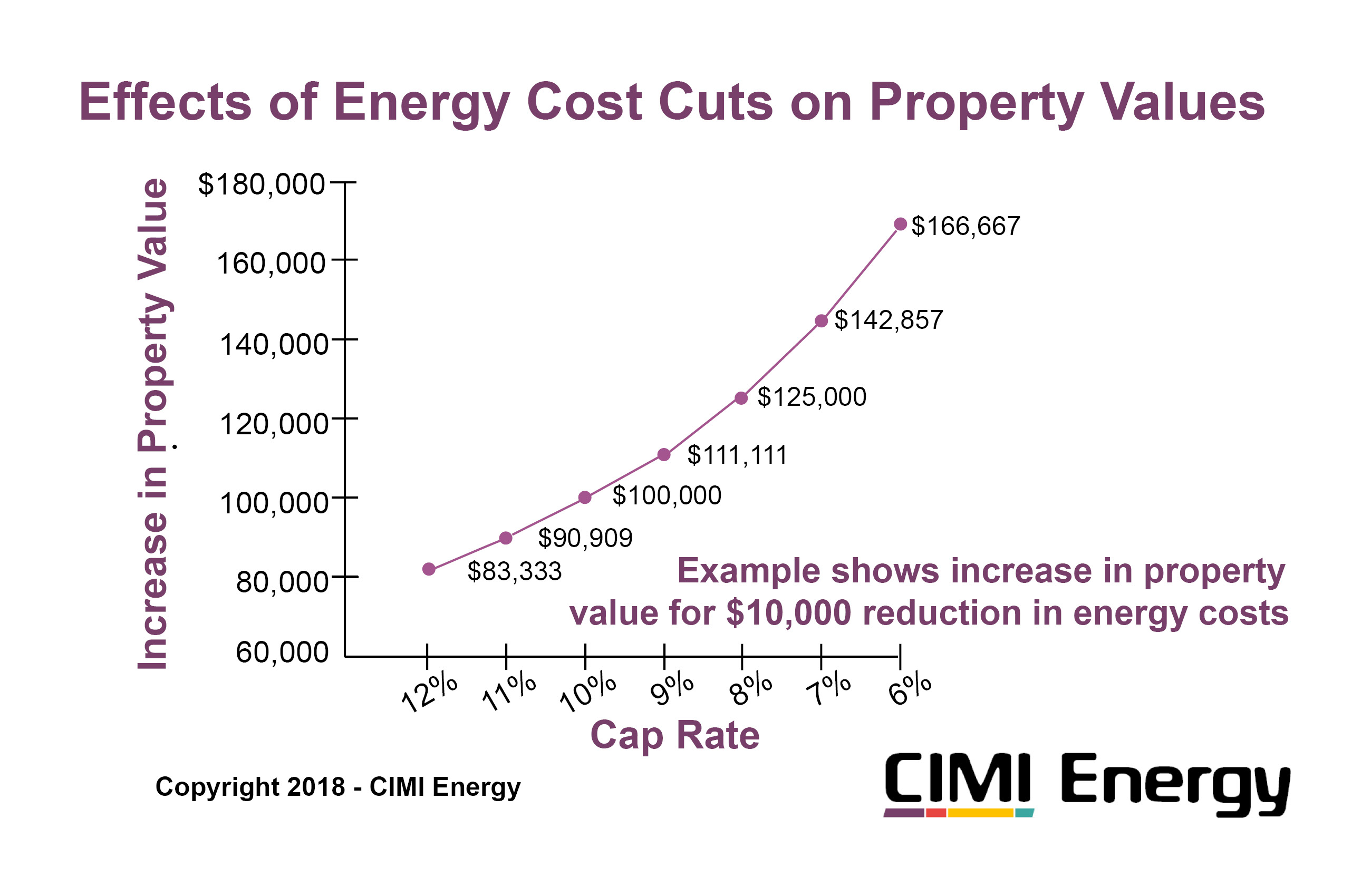Cutting energy costs has many benefits, not the least of which is increasing property values. The example below shows the effects on property values for a $10,000 cut in energy costs. If you consider that many properties can have their costs cut by some multiple of that figure, it’s clear that building (or business) valuations can be increased a great deal.

Investment Payback Considerations
For anyone considering the possibility of selling their property or business, the valuation should be factored into the payback equation. That is, even if a sale were contemplated for as little as one year out, an investment in energy cost cutting technology can make good sense even though the investment exceeds the returns on energy savings in that first year. That’s because the investment is not just lowering annual expenses, it’s also increasing the valuation by some multiple of that expense reduction. In other words, the investment results in a positive net present value.
Property Taxes
Another benefit of cutting energy costs is that the benefits over costs go directly to the bottom line. There should be little to no effect on property taxes because the added property valuation from the cost cuts would not be seen until the building or business is sold. In the meantime, energy cost savings accrue for the entire time that the asset upgrade is in place.


